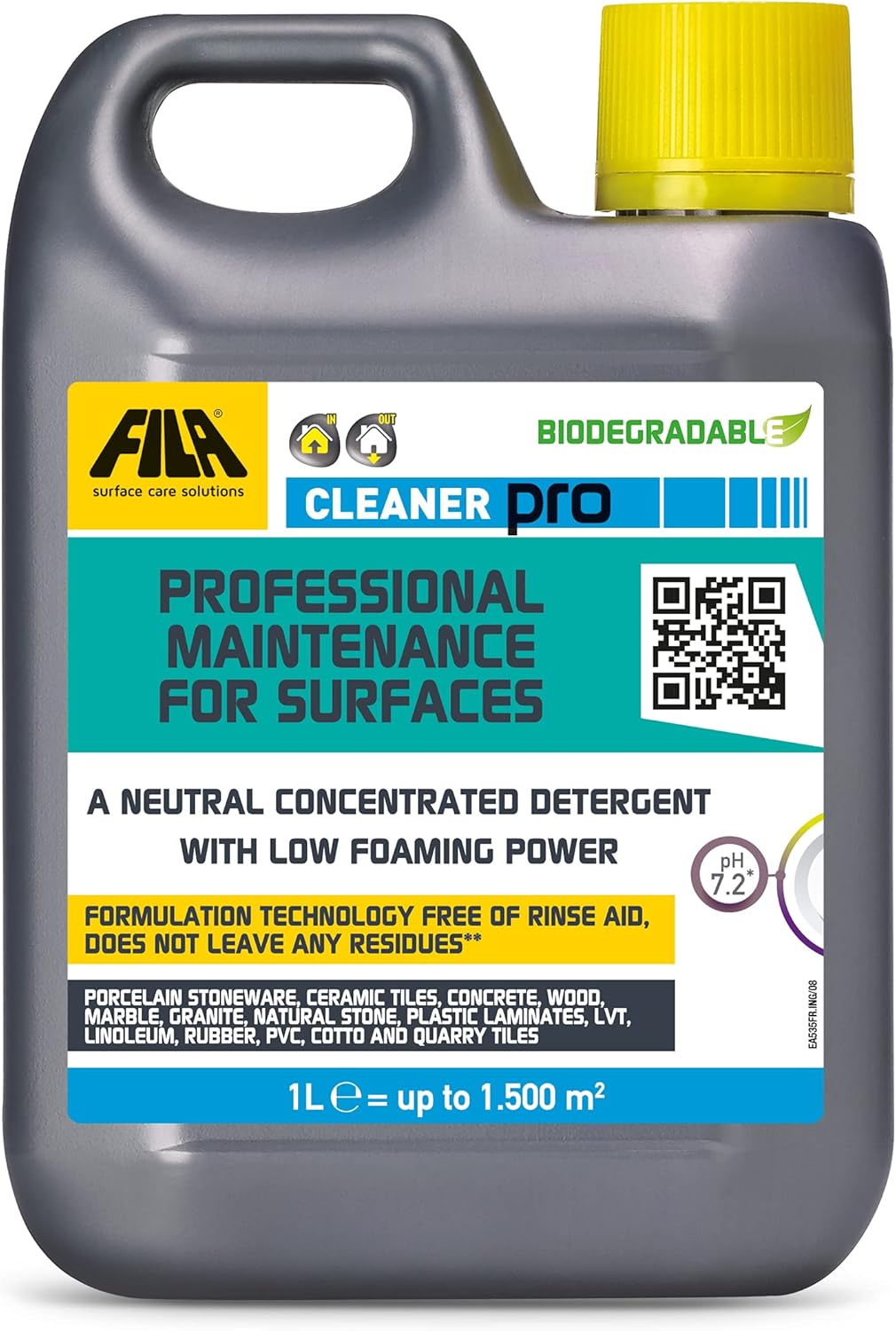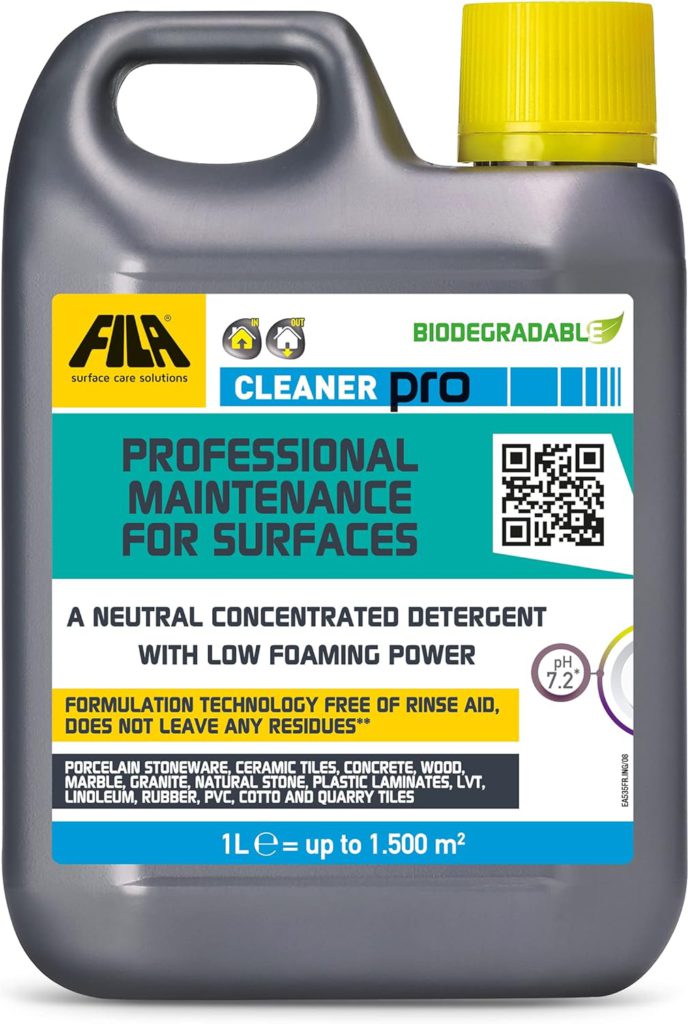Last Updated on November 12, 2025 by David
Key takeaways from the article, “What Is the Best Product for Terrazzo Cleaning?
- Implement pH-neutral cleaners for daily maintenance to prevent etching or dulling the surface, particularly when marble chips are integrated into the terrazzo mix. This practice ensures that your floors retain their beauty while avoiding costly repairs.
- Utilise alkaline cleaners to combat ingrained soils, but remember to rinse thoroughly and reseal if allowed to dwell for extended periods. This approach helps maintain the integrity of the surface and prolong the lifespan of your flooring.
- Avoid acidic, bleach-based, or abrasive products, as these can cause permanent damage to terrazzo and compromise its long-term aesthetic. Protecting your floor from harsh chemicals is essential for preserving its finish.
- Topical sealers can be advantageous when properly maintained and reapplied, offering enhanced gloss and protection for high-traffic areas. Regular application of sealers significantly boosts the durability of your terrazzo surfaces.
- Consistent maintenance using soft tools and prompt spill response helps preserve the finish and minimizes the frequency of intensive cleaning, ensuring your floors always look their best.
Explore the Unique Characteristics of Terrazzo Flooring
What Constitutes the Terrazzo Material?
Terrazzo is a composite flooring material fashioned from a blend of marble, quartz, granite, or glass chips that are embedded within a cement or epoxy base. Following installation, the surface undergoes a meticulous grinding and polishing process to achieve a smooth and visually captivating finish. Due to its natural stone composition, terrazzo is particularly sensitive to harsh chemicals, necessitating gentle care to uphold its aesthetic appeal and durability as time progresses.
Expert Recommendation: Discover Our Preferred Products for Daily Terrazzo Care.

Fila Pro Floor Cleaner
|
LTP MPG Sealer H20
|
Vileda H2PrO Spin Mop System
|
Why Is Specialised Care Essential for Terrazzo Longevity?
In contrast to ceramic or vinyl flooring, terrazzo is a porous material that can readily absorb liquids if it is not properly sealed. The use of acidic cleaners, bleach, or abrasive equipment can dull the surface or even lead to permanent staining. To maintain the quality of terrazzo floors, it is essential to use pH-neutral products specifically formulated for natural stone surfaces. Regular maintenance not only helps retain the shine but also prevents long-term damage that could compromise the floor's overall aesthetic appeal and usability.
Steer Clear of Common Pitfalls When Cleaning Your Terrazzo Floors

Why Are Acidic Cleaners Detrimental to Terrazzo?
Acidic products, including vinegar, lemon juice, or lime scale removers, can etch the surface of terrazzo, particularly if it contains marble chips. Just one application can create dull patches or cause irreversible damage to the finish. Many homeowners mistakenly believe that natural acids are safe to use; however, terrazzo reacts differently than ceramic or porcelain tiles, making it imperative to avoid acidic formulations altogether to maintain its integrity.
What Dangers Do Steam Cleaners and Bleach Present?
Steam cleaners may seem convenient, but the high temperature and pressure can weaken sealants and force moisture into the substrate. On the other hand, bleach is alkaline and can discolour terrazzo over time. Both cleaning methods jeopardise the integrity of the floor, especially in older properties or areas where the sealant has worn thin, thus compromising the surface's overall quality and aesthetic appeal.
How Can Abrasives Affect Terrazzo's Visual Appeal?
Utilising scouring pads, gritty powders, or stiff brushes can scratch the polished surface of terrazzo. Once scratched, the floor loses its reflective quality and becomes increasingly challenging to clean. For effective deep cleaning, always choose soft pads and non-abrasive tools specifically designed for stone surfaces. Preserving the finish is essential for maintaining the long-term beauty and ease of maintenance of your terrazzo floor.
Select the Optimal Deep-Cleaning Product When pH-Neutral Cleaners Are Insufficient
What Features Characterise a Safe Cleaner for Terrazzo?
Safe terrazzo cleaners are characterised by being pH-neutral, non-acidic, and devoid of harsh solvents. Considering that terrazzo frequently includes marble chips, it reacts negatively to both acidic and alkaline products. A balanced cleaner effectively lifts dirt without harming the surface or sealant, thereby ensuring the longevity of your flooring. Always seek labels indicating compatibility with natural stone or terrazzo.
In instances where terrazzo floors are heavily soiled—especially in kitchens, hallways, or commercial spaces—standard pH-neutral cleaners may lack the strength necessary to dissolve ingrained grime. Over time, oils, grease, and dirt can settle deeply into the porous surface, particularly if the sealant has deteriorated, underscoring the need for stronger cleaning solutions.
Why Is Opting for an Alkaline Cleaner Beneficial?
Alkaline cleaners are specifically formulated to penetrate organic soils, grease, and stubborn residues that neutral products cannot effectively eliminate. These cleaners emulsify contaminants, allowing them to be lifted from the terrazzo’s pores and rinsed away. For deeply embedded grime, a more robust alkaline formulation may be necessary to restore the floor's original appearance and shine, ensuring a fresh look.
Why Is Rinsing Crucial to Prevent Surface Damage?
While effective, alkaline cleaners should be applied with caution. Leaving them on the surface for extended periods can strip protective sealants or cause discolouration. After the suggested dwell time—typically between 5 to 15 minutes—rinse the floor thoroughly using clean water. Employ a wet vacuum or several mop passes to ensure that no residue remains. Inadequate rinsing can lead to a chalky film or long-term dullness of the surface, which detracts from the overall appearance and quality.
Is Resealing Required After Deep Alkaline Cleaning?
If the cleaner required an extended dwell time to break down soils, or if the floor was unsealed, it is advisable to reseal the terrazzo after cleaning. Alkaline products can open the stone's pores, making it more prone to future staining. Applying a breathable impregnating sealer helps restore protection and maintain the floor's resistance to moisture and dirt, thus ensuring its longevity and pristine condition.
Your All-Encompassing Guide to Deep-Cleaning Terrazzo Floors
How to Thoroughly Prepare the Surface for Cleaning
Begin by removing loose dust and debris using a soft-bristle broom or a vacuum set for hard floors. Avoid dragging furniture or employing metal-edged tools, as these can scratch and damage the surface. If the floor has old polish or residue, consider using a safe terrazzo stripper prior to initiating the deep-cleaning process to achieve optimal results and restore vibrancy.
How to Safely and Effectively Apply the Cleaner
Mix your chosen cleaner according to the manufacturer's guidelines. Apply it evenly across the floor using a microfiber mop or a soft applicator. Allow the solution to sit for 5 to 10 minutes to loosen embedded dirt, ensuring it does not dry on the surface. Work in manageable sections to maintain control and ensure thorough coverage of the entire area for the best results.
What Techniques Are Best for Agitation and Rinsing?
Utilise a soft white pad or a slow-speed rotary machine with a non-abrasive brush to agitate the surface effectively. This approach lifts grime from the terrazzo’s pores without causing scratches or damage. Rinse thoroughly with clean water, changing the water frequently to avoid redepositing dirt. A wet vacuum can expedite this process and enhance results, ensuring a clean and polished finish that will impress.
How to Dry and Buff for a Stunning Finish
Allow the floor to air dry completely, or use a dry microfiber mop to eliminate any residual moisture on the surface. Once the floor is dry, buff the surface with a clean white pad to restore a subtle sheen that enhances its beauty. If the floor appears dull after cleaning, it may be necessary to consider resealing or polishing, especially in areas subjected to high foot traffic, to maintain its enchanting look.
Identifying When to Reseal Your Terrazzo Floor
What Indicators Suggest That Your Seal Has Worn Away?
If your terrazzo floor appears dull, absorbs water rapidly, or shows signs of staining, the sealant may have deteriorated. A simple water-drop test can be conducted: place a few drops on the surface and observe. If the water darkens the stone or vanishes within seconds, it is time to reseal your floor to restore its protective barrier.
How to Select the Right Sealer for Your Specific Needs
For homes in the UK, solvent-based impregnating sealers like Lithofin Stainstop or Fila MP90 offer long-lasting protection without altering the natural appearance of the floor. These products penetrate the surface, blocking moisture and stains without forming a visible layer that might impact aesthetics, ensuring the longevity of your terrazzo floor.
How to Apply Sealer Effectively at Home
Thoroughly clean the floor and allow it to dry for at least 24 hours. Apply the sealer evenly using a lint-free cloth or sponge, working in small sections to ensure complete coverage. Allow it to absorb for the recommended duration and then wipe off any excess. A second coat may be necessary for areas with high traffic. Always ensure proper ventilation and adhere to safety precautions outlined on the product's label for best results and to ensure safety during application.
Best Practices for Sustaining Terrazzo Following Deep Cleaning
Crucial Weekly and Monthly Maintenance Practices
To keep terrazzo looking its finest, regularly dry mop with a microfiber pad to eliminate dust and debris. For weekly cleaning, utilise a diluted pH-neutral cleaner and avoid soaking the floor. Monthly, inspect high-traffic areas for signs of wear and reapply cleaner as necessary. Excessive moisture should be avoided, as it can compromise sealants over time and negatively affect the floor's durability and aesthetic appeal.
What Are the Most Effective Tools and Mops for Ongoing Terrazzo Maintenance?
Microfiber mops are particularly effective for terrazzo as they capture fine particles without scratching the surface. Avoid sponge mops, which can push dirt deeper into the pores of the floor. For larger areas, consider using a spray mop with refillable cartridges, which allows for controlled application of stone-safe cleaning solutions. Always rinse mop heads thoroughly after use to prevent residue buildup that could damage the floor over time.
How to Promptly Address Spills and Stains?
Immediately blot spills using a soft cloth or paper towel, being cautious not to rub, as this can spread the stain further. For oily or pigmented spills, apply a small amount of stone-safe cleaner and rinse with clean water. If a stain persists, consider using a baking soda and water poultice, but ensure to test it first to guarantee it won't damage the finish. Prompt action prevents permanent marks and keeps your terrazzo floor looking immaculate and well cared for, maintaining its visual appeal.
Frequently Asked Questions About Terrazzo Floor Cleaning
Can I Use Vinegar on My Terrazzo Floors?
No. Vinegar is acidic and can etch terrazzo surfaces, especially if the flooring contains marble chips. Even diluted vinegar can lead to dull patches or long-term damage. Always opt for a pH-neutral cleaner specifically formulated for natural stone surfaces to ensure the longevity of your flooring and maintain its pristine condition.
What Should I Do If My Floor Is Already Damaged?
If your terrazzo surface has scratches, stains, or dull patches, deep cleaning alone may not restore its original appearance. Professional honing or polishing may be necessary to eliminate surface damage. In some cases, resealing or applying a stone-safe polish can enhance the visual appeal, but restoration is often the best course of action for heavily worn floors, bringing back their former glory.
How Often Should I Deep-Clean My Terrazzo Floors?
For most homes in the UK, deep cleaning terrazzo every 6 to 12 months is generally sufficient. High-traffic areas, such as hallways or kitchens, may require more frequent attention. Regular maintenance between deep cleans helps prolong the life of the sealant and keeps the flooring looking fresh and vibrant throughout the year, minimising the need for extensive restorative measures.
The Article What Is the Best Product for Terrazzo Cleaning first found on https://www.abbeyfloorcare.co.uk
The Article Best Terrazzo Cleaning Products for a Sparkling Finish appeared first on https://fabritec.org
The Article Terrazzo Cleaning Products for a Gleaming Shine Was Found On https://limitsofstrategy.com
The Article Terrazzo Cleaning Products for a Sparkling Finish found first on https://electroquench.com


